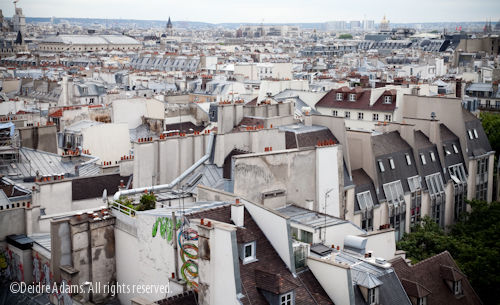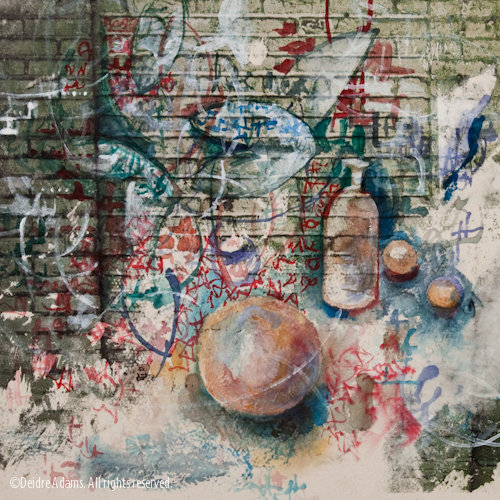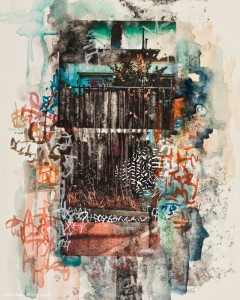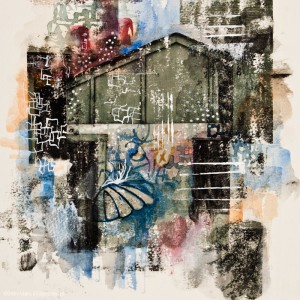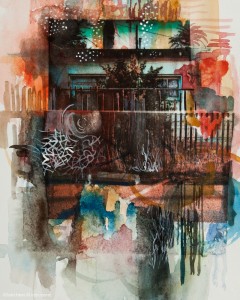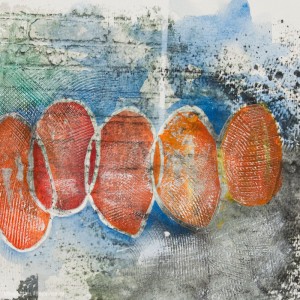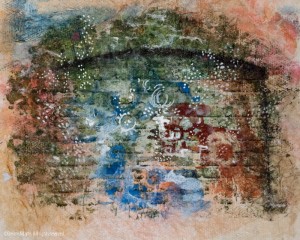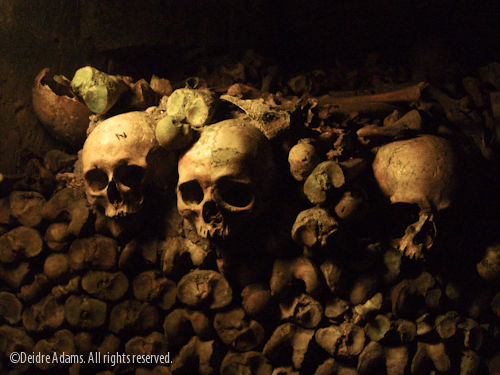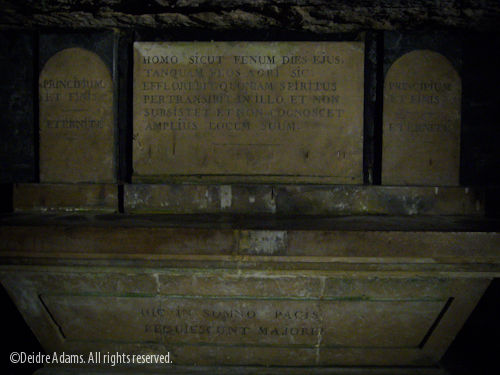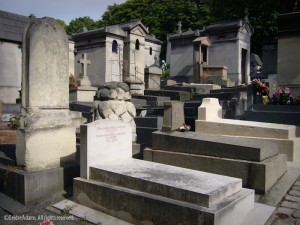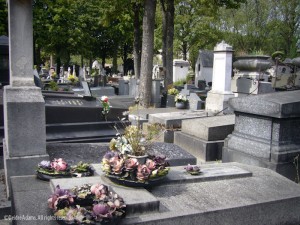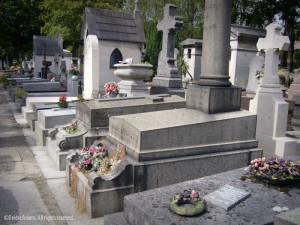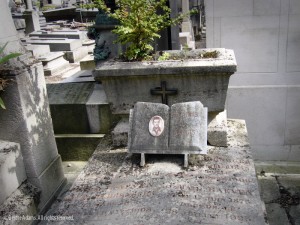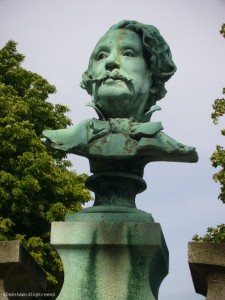
Monday was museum day. If art museums are your thing, there’s no better place than Paris. By this time, all of the group from school (Metro) had arrived, and we went together to several of the museums. We didn’t go to the Louvre as a group, since it’s just too overwhelming to do in a short amount of time, but some went on their own. I chose not to, because I simply am not into the crowd thing. Maybe some day I’ll get to go again at a time of year when there aren’t so many tourists in town.
Our first stop was the Musée de l’Orangerie, an institution built for the express purpose of housing eight of Monet’s 2×6-meter paintings of waterlilies, known as Nymphéas. We had special arrangements to go at a time when only a couple of small groups were allowed in and were able to avoid the masses of people who come in during the regular hours.
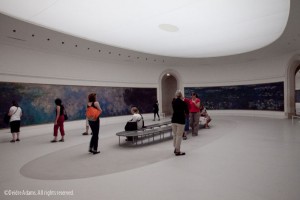
The Monet paintings are installed on curved walls in two oval-shaped rooms lit only by softly diffused natural light coming from overhead skylights covered by fabric filters. Standing in front of these enormous paintings at close range, I began to lose sight of them as paintings. The texture of the brush strokes becomes quite abstracted and is lovely in its own right.
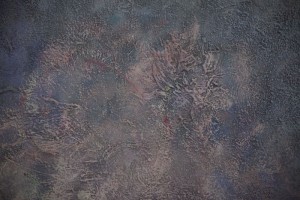
Can you imagine having a studio space large enough to paint something like this and be able to get far enough back from it to see the overall effect?
The Orangerie also has an impressive collection of paintings by Cezanne, Picasso, Renoir, Modigliani, Utrillo, Derain, Soutine, and others. But by far my favorite in the Museum that day was a temporary exhibition of work by contemporary artist Didier Paquignon called Tu rencontreras d’abord les sirènes. I had never heard of Paquignon before, and I couldn’t find much about him online, but more of his work can be seen here. (Unfortunately, I can’t seem to find my notes with the titles of these works, below.)
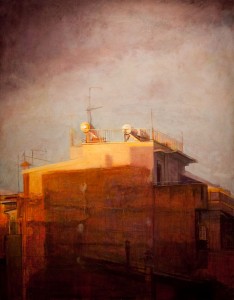

Two paintings by Didier Paquignon, photographed at Musée de l’Orangerie, July 2009
It seems there is no subject Paquignon can’t render with lively expression and sensitive soulfulness, whether it’s an octopus, an urban landscape, a portrait, or a strangely familiar yet ambiguous interior. His handling of color and light give the work an ethereal glow that apparently can’t be reproduced in print. I was excited to find the exhibition catalog in the museum shop, but then disappointed because the paintings appeared flat and lifeless in the book.
Other activities that day included lunch at Le Souffle restaurant, a trip to the Musée National Picasso, more walking, a little shopping, and still more walking.
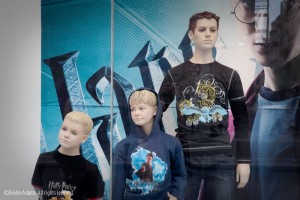
Harry Potter et le Prince de Sang-Mêlé is a big deal here.
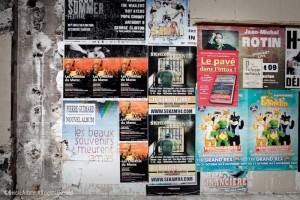
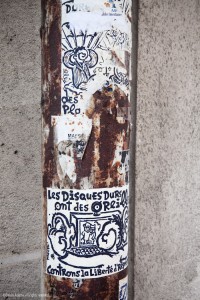
A few of my very favorite things: concrete and rust and peeling stuff.
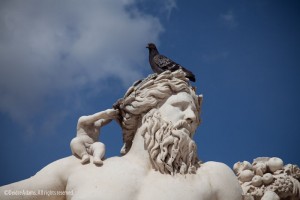
(I’d like to hold a caption-writing contest for this one.)
The last tour for the day was the Centre Pompidou, a vast, multi-storied institution with multiple exhibition halls, research facilities, performance halls, a restaurant, an amazing bookstore, and so on and so forth. My only regret was that we had just a couple of hours here. I probably could have spent 2 or 3 days, quite happily. In addition to an amazing permanent collection of modern and contemporary art, the Pompidou was hosting major retrospective exhibitions of work by both Kandinsky and Calder. I didn’t have time to get through both of them, so, since Kandinsky has always been one of my favorite artists, that was the one I chose. One of the interesting things about the exhibit was that, in addition to the paintings, they included a selection of pages from Kandinsky’s notebooks. I always love seeing a glimpse into another artist’s thought process, but when it’s Kandinsky, well, that’s beyond cool.
The Pompidou structure is also quite interesting. I didn’t get a good shot of it, but you can see one here. You can decide for yourself whether you think it’s awesome or hideous, but regardless, the views from the top are spectacular.
